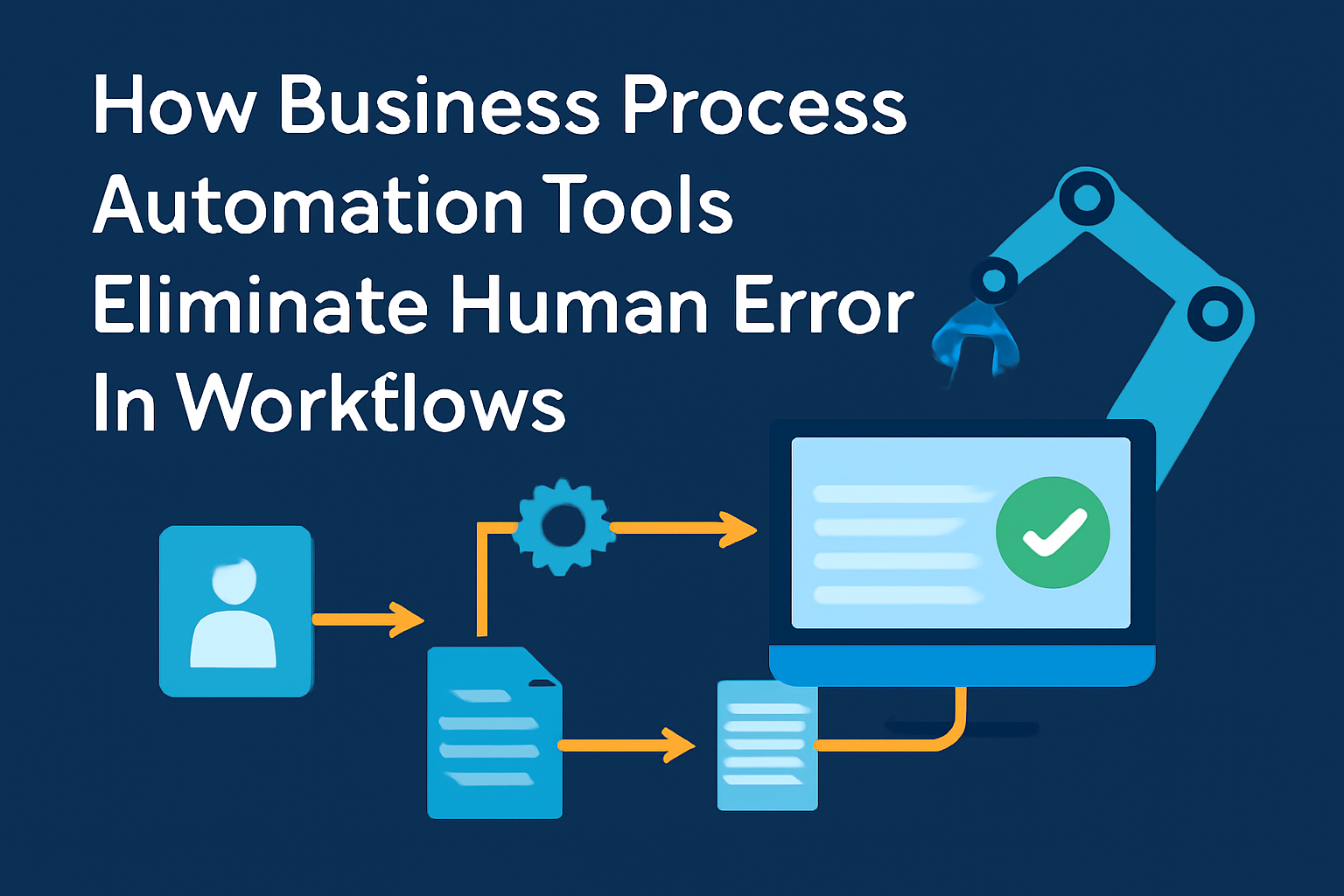
Remote work models are becoming the default for organizations worldwide. A McKinsey Global Survey reveals that 87% of companies believe digital transformation has accelerated significantly over the past two years, driving automation into mainstream business strategies. Businesses without automation face delays, redundancies, and poor visibility across distributed teams.
Business leaders now realize automation is not optional. It supports seamless collaboration and ensures tasks move forward without unnecessary bottlenecks. Teams operating remotely benefit greatly when systems handle repetitive work efficiently, freeing time for strategic activities.
The adoption of business process automation tools positions organizations to scale, innovate, and maintain operational excellence in the competitive landscape of 2025.

Key Benefits of Business Process Automation for Remote Teams
Modern remote teams require systems that minimize delays and maximize efficiency. Process automation delivers seamless workflows, real-time visibility, and stronger collaboration across distributed environments. The sections below highlight how these tools drive measurable impact in productivity, accuracy, and scalability.
Enhancing Productivity with Automated Workflows
Manual tasks drain focus and time. Automating repetitive steps such as approval routing, document distribution, and meeting reminders frees up hours each week. A Harvard Business Review analysis found that workers using automation saved up to 6 hours weekly—equivalent to a full workday—reinvesting it in strategic thinking and creative problem-solving.
Remote teams achieve predictable workflows that minimize context switching and reduce burnout. The integration of key tools prevents information silos and ensures that everyone has exactly what they need, when they need it.
Leveraging Low-Code Automation for Speed and Accessibility
Remote teams benefit from empowerment through development tools that require minimal coding. Platforms featuring low-code automation let non-technical team members build workflows, triggers, and dashboards.
Forrester predicts that low-code adoption will grow by 23% annually through 2025, enabling business users to develop apps with reduced reliance on IT. That autonomy accelerates iteration, adaptation, and innovation. Teams respond faster to changing needs, while IT focuses shifts toward governance and strategy rather than routine development.
Improving Data Accuracy Through a Data Management Tool
Distributed operations require accurate data handling to maintain trust and optimize outcomes. A robust data management tool centralizes inputs, automatically cleanses records, and enforces validation rules to ensure accuracy.
McKinsey reports that poor data quality costs the average organization 15 percent of its earnings before interest and taxes annually. Remote staff working across systems and regions avoid costly errors and duplicated effort. Reliable data supports analytics initiatives, aids in compliance, and bolsters confidence in decision-making.
Reducing Costs and Driving Long‑Term Efficiency
Automation reduces headcount needs while boosting throughput. Organizations using process automation tools report average operating cost reductions of up to 30% and productivity increases of 40%.
Remote teams especially benefit when systems handle repetitive back-office tasks around the clock. Cost savings from labor reduction support reinvestment in employee development, customer experience enhancements, or geographic expansion. Automation becomes an engine for growth rather than a one-time project.
Enhancing Collaboration with Integration and Visibility
Scattered teams rely on multiple applications—such as project management, CRM, communication, and file storage systems—to operate effectively. Automation platforms tie those tools together using connectors and APIs. Updates flow seamlessly from one system to another. Reminders appear when milestones arrive.
Data syncs automatically. As a result, workflow cohesion improves and information friction is removed, enabling smooth transitions across teams. Productivity increases when everyone has access to the latest records and is aware of the current status.
Enforcing Compliance and Security Through Automated Protocols
Security challenges grow with remote operations. Automated workflows embed compliance steps, role-based permissions, and audit logging into critical processes. A study by PwC highlights that organizations using automated compliance controls reduce their regulatory fines by 45%.
Document versioning, encrypted file transfers, and access logging become standard rather than optional. Risks are minimized, and executives gain peace of mind knowing controls remain consistent and enforceable regardless of location.
Strengthening Team Morale Through Reduced Workload
Automation reduces repetitive administrative tasks that often overwhelm remote employees. Freed from manual data entry, report generation, and status tracking, teams gain time for meaningful work. This shift fosters greater engagement and minimizes burnout risks. Higher morale leads to improved collaboration, stronger team cohesion, and better overall performance.
Supporting Rapid Scaling of Remote Operations
Growth into new markets requires scalable systems that can adapt without adding significant overhead. Automation enables organizations to expand teams, onboard new employees, and manage increased workflows without straining existing resources.
According to IDC, businesses that implement scalable automation grow revenue 1.8 times faster than those that rely on manual processes. Flexible workflows ensure global teams remain aligned during periods of rapid change.
Fostering Innovation With Process Insights
Process automation provides actionable data that highlights inefficiencies and uncovers opportunities for refinement. Leadership teams use these insights to experiment with new approaches and drive innovation across departments. Remote teams remain adaptable, using real-time feedback to iterate quickly and stay ahead of market demands.
Choosing and Implementing the Right Solution
Start by mapping out the workflows most ripe for automation. Examples include onboarding, invoicing, billing, support tickets, and report generation. Look for platforms that support strong integration capabilities, intuitive low-code builders, analytics dashboards, and enterprise-grade security. Demo multiple vendors and involve remote users early.
Pilot small processes first, measure improvements, and iterate based on feedback. Scale gradually across teams and regions. Provide training resources and user champions to drive adoption. Regularly review performance to uncover new automation opportunities and refine existing workflows.
Conclusion
Remote work requires cohesive, efficient, and intelligent systems to thrive. Automation delivers on all fronts—boosting productivity, accuracy, collaboration, security, and cost efficiency. Partnering with a specialist like KPOData ensures seamless selection, integration, and ongoing optimization of tailored automation tools. Embrace this transformation to power remote team performance, foster innovation, and maintain a competitive advantage in 2025. Contact us today!





